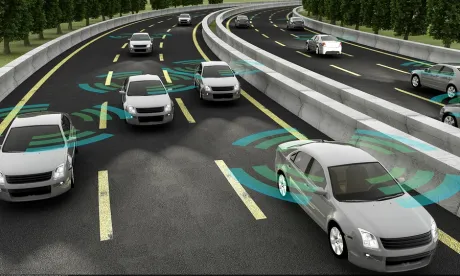Self-driving cars are inherently presented with a challenge—communicating with their surroundings. However, Drive.ai has attempted to address that challenge by equipping its self-driving cars with external communication panels that convey a variety of messages for drivers, pedestrians, cyclists and everyone else on the road. Drive.ai CEO Bijit Halder said, “Our external communication panels are intended to mimic what an interaction with a human drive would look like. Normally you’d make eye contact, wave someone along, or otherwise signal your intentions. With [these] panels everyone on the road is kept in the loop of the car’s intentions, ensuring maximum comfort and trust, even for people interacting with a self-driving car for the first time.” To help the company build its platform, one of the company’s founders recorded herself driving around normally and analyzed all the interactions she had with other drivers, including eye contact and hand motions.
Specifically, the panel uses lidar sensors, cameras, and radar to determine if any pedestrians are in or near a crosswalk as it approaches the crosswalk. If the vehicle detects that pedestrian’s path, the car begins to slow down and displays the message “Stopping for you.” Once the vehicle comes to a complete stop, it displays the message “Waiting for you.” When there are no more pedestrians are detected, the vehicle will display the message “Going now, please wait” to let other pedestrians to wait to cross.
Drive.ai continues to conduct research to determine the best means of communication including the best location for such communications, which is currently right above the wheels based on its previous studies. Halder said, “The more you can effectively communicate how a self-driving car will act, the more confidence the public will have in the technology, and that trust will lead to adoption on a broader scale.”



 />i
/>i

